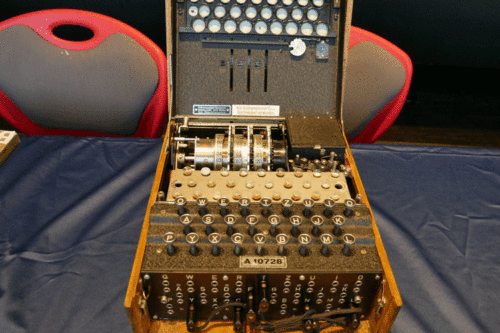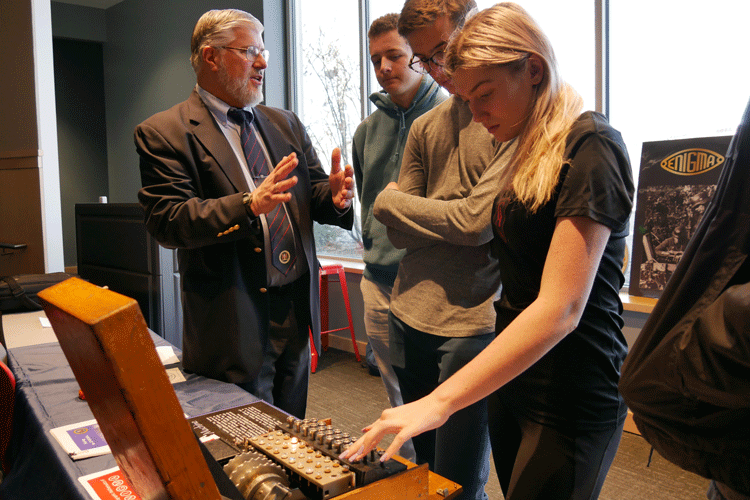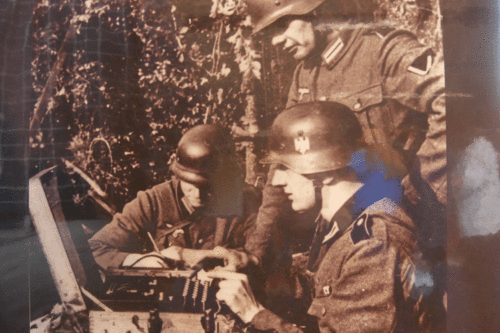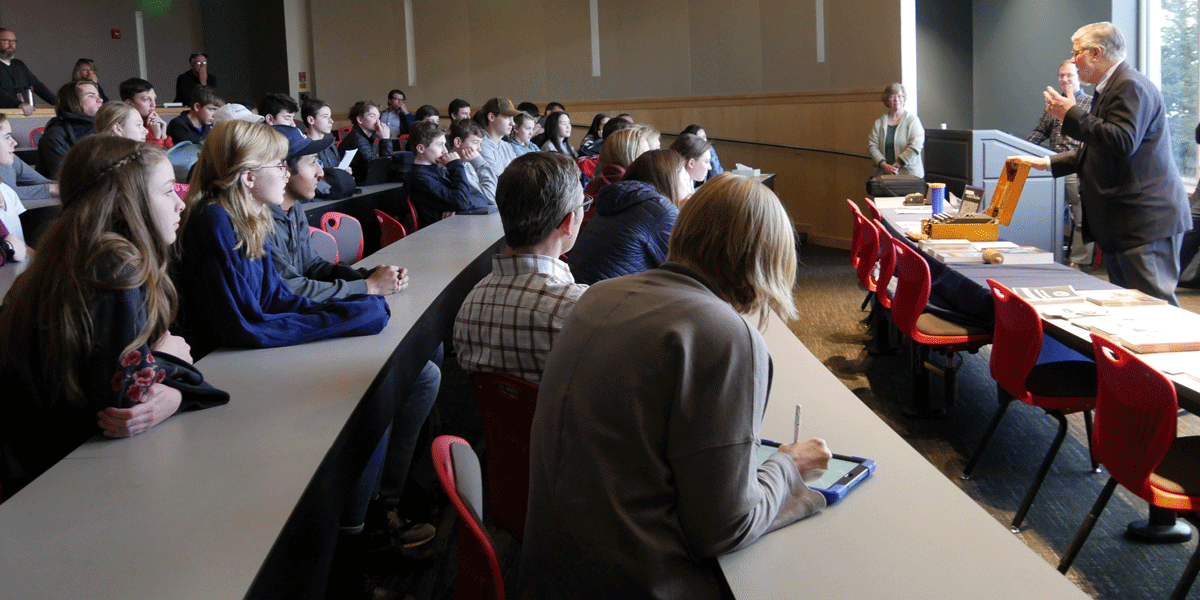Enigma—the infamous electro-mechanical encryption and decryption machine that Nazi Germany used during World War II—might seem an artifact relegated to history books. That is, until an Enigma machine showed up for students to inspect in Colorado Academy’s Upper School.
Accompanied by four members of the National Security Agency (NSA), the national-level intelligence agency of the U. S. Department of Defense, Enigma visited CA at the invitation of Sean Gallop, Upper School Computer Science and Robotics teacher.
“Once I established a connection with the NSA this summer, I felt that seeing the actual Enigma machine would create the necessary authenticity and “realness” for students to become totally engaged with their learning,” Gallop says. “For the study of cryptography, which is a big subject of interest for our computer science class, it was the equivalent of bringing the Eiffel Tower to Colorado Academy for our French students.”

Cracking the code
 With keyboard, lampboard, plugboard, and multiple rotors in a typewriter-sized case, Enigma scrambled secret German military messages by changing rotor settings with every letter typed. By some estimates, there were 156 trillion possibilities for anyone trying to decode an Enigma message, complicated further by the Germans’ policy of changing the settings on the machine daily, destroying the previous 24 hours of codebreakers’ work.
With keyboard, lampboard, plugboard, and multiple rotors in a typewriter-sized case, Enigma scrambled secret German military messages by changing rotor settings with every letter typed. By some estimates, there were 156 trillion possibilities for anyone trying to decode an Enigma message, complicated further by the Germans’ policy of changing the settings on the machine daily, destroying the previous 24 hours of codebreakers’ work.
The Nazis believed Enigma was unbreakable, but a group of Polish mathematicians had initial success deciphering it, and with their assistance, a British team including Alan Turing—made famous by the film The Imitation Game—was able to build a machine to speed up decrypting the Enigma machine. Turing’s machine is often considered the predecessor of the modern computer. The work of the Poles and British teams is said to have shortened the war by two years and saved millions of lives on both sides of the conflict.

How to best understand Enigma?

Gallop had prepared his students to meet Enigma by writing curriculum for a six-class mini-unit over Winter Break. He addressed the historical implications of the device with a series of readings, including one about a cybersecurity expert who managed to purchase an Enigma machine on eBay in 2013. He also wanted the students to understand how the machine worked, and the best way to do that, he believed, was for the students to write the program, which he broke down into six smaller programs. “Students marched through that work,” Gallop says. “And when they were finished, they were totally prepared to write the Enigma code.”
“Science and technology have never been fields that are very interesting to me,” says Senior Quinn Taylor. “But this assignment captured my attention, because it was pulled from history. Then to see Enigma, with the wires and keys, and know that I wrote the program with 40 lines of code—that’s the coolest! I have so much respect for the people who broke the Enigma machine.”
One by one, students had a chance to inspect and try out Enigma. “Seeing the Enigma was the best culmination of the assignment,” says Sophomore Baillie Weil, who confessed that he had sailed through the Enigma curriculum and was now sending encrypted emails. “It’s amazing to have that piece of history in front of us.”
The NSA mission
The NSA team—Dr. Tom Walcott, Paul Magnowski, Damon Smith, and Frances Pendell—shared fascinating insights into the history of Enigma. They confirmed the storyline of The Imitation Game, which showed the Allies running operations to hide the source of the information they were decoding from the Germans, instead of leveraging it in a way that would make it obvious they had cracked Enigma. But the NSA team had its own mission at CA. They were hoping to convince students to consider an NSA career.
“It took a big team of people to solve Enigma—Polish mathematicians, French spies, British industrialists, Americans, Canadians,” says Magnowski. “It takes diversity of thought and background experiences to solve problems. We are looking for a diverse workforce and leadership at the NSA.”
His message resonated with Weil. “Breaking codes would be a way to save lives, and you would be doing something worthwhile,” he says. “I want to have a career where I help people. This would be one way to do that.”
The visit of Enigma coincided with a major assignment due date for Gallop’s students. “Two of my students did more than turn in the required writing assignment,” he laughs. “They delivered the entire assignment encrypted with their respective Enigma machines.” Now it will be up to their teacher to crack their Enigma.
